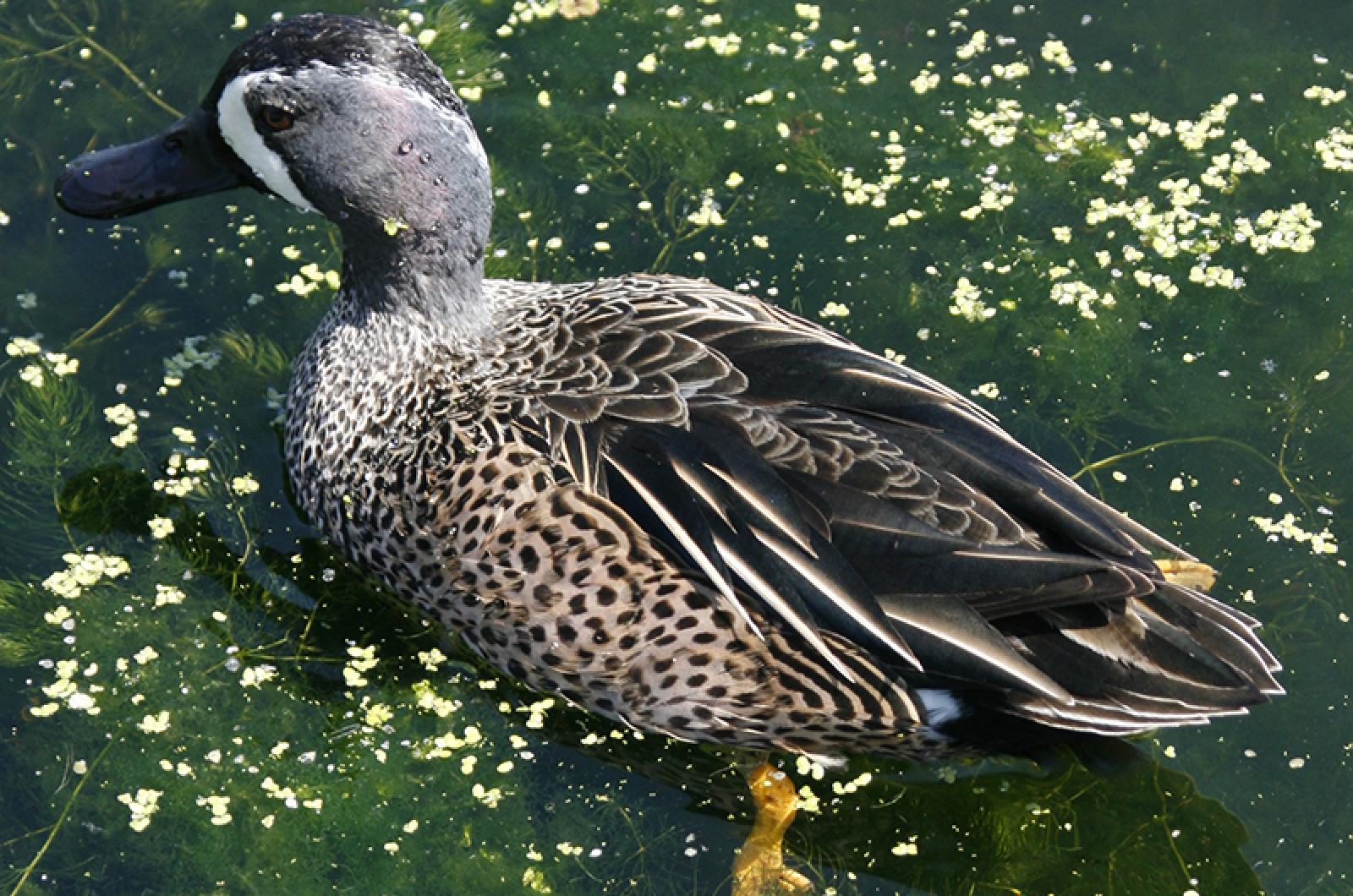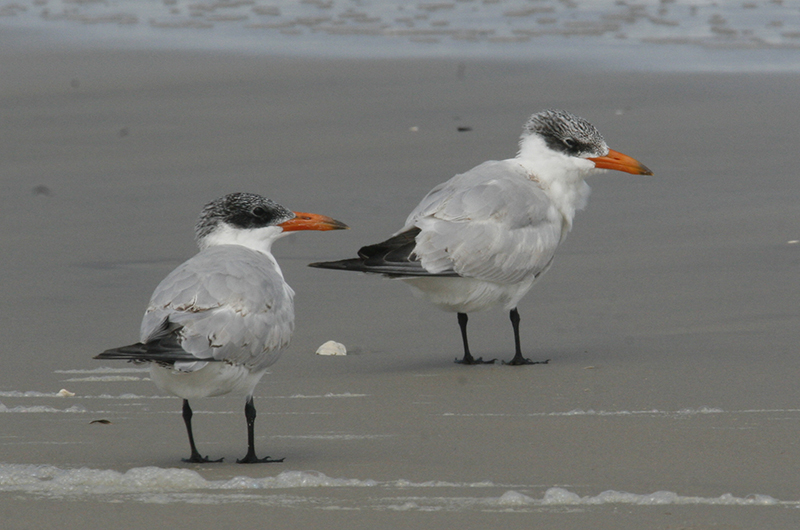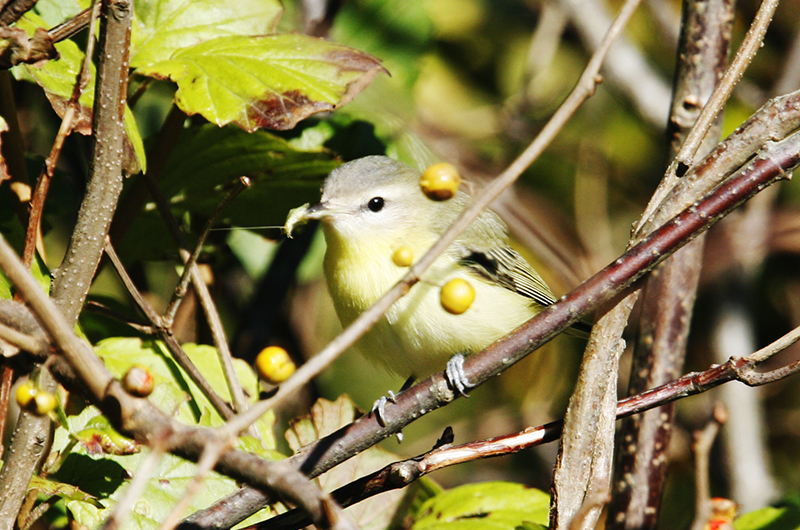For perhaps the first time in September, the weather was favorable for migrants to reach the Island. On the last two days of September, there were north to northwest winds, which generally aid the flight of nocturnal migrants as they cross Canada on their way to the Atlantic coast. It seemed like the rest of the month was dominated mostly by northeasterly or southeasterly winds off the ocean, which tend to inhibit their arrival here.
Bird Sightings
On the morning of Sept. 30, Allen Keith had “a very, very good day” as he birded the Gay Head Cliffs, Gay Head Moraine and Squibnocket area. It is the season for migrating songbirds and he found a wide variety of them. His highlights included four species of vireos – Philadelphia, red-eyed, blue-headed and white-eyed – as well as 11 species of warblers – Nashville, western palm, magnolia, black-throated blue, black-throated green, pine, bay-breasted, blackpoll, redstart, ovenbird and yellow-rumped. He also found yellow-bellied sapsucker, dickcissel, brown thrasher and both Cooper’s and sharp-shinned hawks.
Unfortunately, the rest of us did not fare as well.
Also on Sept. 30, Craig Kesselheim birded Felix Neck and found three species of warblers: Nashville warbler, blackpoll warbler and pine warbler.
Bob Shriber, Susan Whiting, Lanny McDowell and Morgan Muir teamed up on Sept. 29 to bird the Gay Head Cliffs. Their highlights included northern harrier, sharp-shinned hawk, merlin, eastern phoebe, red-breasted nuthatch, house wren, purple finch, bobolink, yellowthroat and dickcissel, while off Lighthouse Road they added Nashville, magnolia and blackpoll warblers. Susan Whiting and Bob Shriber then continued on to Old South Road in Aquinnah where they added blue-headed vireo and northern parula.
By far the best bird of the week is Luanne Johnson’s sighting of a Hudsonian godwit on Sept. 29 at Little Beach. This is the first sighting of the year for this fairly large sandpiper, about the size of a willet with an upturned bill. We see this species in most but not all years. The news of this sighting spread as text messages will and Ken Magnuson, Margaret Curtin and Jeff Bernier got to see this bird too.
That same morning at Little Beach, Luanne Johnson also spotted some late-season lingering semipalmated plover, piping plover, ruddy turnstone, least sandpiper, semipalmated sandpiper, short-billed dowitcher, a dozen common terns and a saltmarsh sparrow, as well as an early common eider. More seasonal are sanderling, greater yellowlegs, black-bellied plover, laughing gull and great blue heron. Jeff Bernier added a lingering red knot to this list.
Bob Shriber and Susan Whiting could not find the godwit on Little Beach on Sept. 30, so they headed to Norton Point. While they did not find it there either, they found two Caspian terns (an adult and an immature), another first for the year. These large terns – almost the size of a herring gull – are pretty much an annual visitor in October. They also found American oystercatcher, greater yellowlegs, laughing gull, common eider, black-bellied plover, ruddy turnstone and sanderling.
A new species for the fall is a lone female American wigeon, found by yours truly on my Sept. 29 Guided Birding Tour at the Oak Bluffs pumping station. There were no migrant songbirds there. We proceeded on to State Beach, where there were several hundred tree swallows (which were also observed that day by Happy Spongberg) swarming around a patch of bayberry bushes. Looking at Sarson’s Island from the big bridge, we found 140 laughing gulls and 20 lingering black skimmers. The next day, the number of wigeons had increased to five at the pumping station.
Common terns have pretty much left our area but this column has already mentioned two sightings of this species. On Sept. 30, Richard Hamilton was sailing in Edgartown when a common tern landed on his boat. And on Sept. 23, John Young found two common terns on State Beach and 25 more on Norton Point Beach. For the rest of the fall, we are more likely to see Forster’s terns. Mr. Young also spotted a peregrine falcon at the latter site.
Craig Kesselheim birded Felix Neck on Sept. 30 and found American oystercatcher, black-bellied plover, greater yellowlegs, laughing gull, great egret, little blue heron (this bird has been there for a while) and osprey. On Sept. 29 at Felix Neck, he added sharp-shinned hawk, Nashville warbler, blackpoll warbler and pine warbler.
Walt Looney visited Little Beach on Sept. 25 and was the first to report the lingering red knot, ruddy turnstones and least sandpipers. On Sept. 30 at the same site, he found the lingering semipalmated plover, piping plover, ruddy turnstone, red knot, least sandpiper, semipalmated sandpiper and the saltmarsh sparrow mentioned above.
Lisa Maxfield reports that an osprey was still lingering around the hospital on Sept. 27.
On the afternoon of Sept. 26, I visited Crystal Lake where my lone highlight was a flock of nine blue-winged teals. This small lake on East Chop is a good place to find ducks. So, too, is Blackwater Pond where Tony Lima found three ring-necked ducks, nine wood ducks and a handful of mallards. Many more ducks will be arriving soon!
Southbound songbirds are now migrating through. Please report all your sightings to birds@mvgazette.com.
Robert Culbert leads Saturday morning Guided Birding Tours and is an ecological consultant living in Vineyard Haven.










Comments
Comment policy »